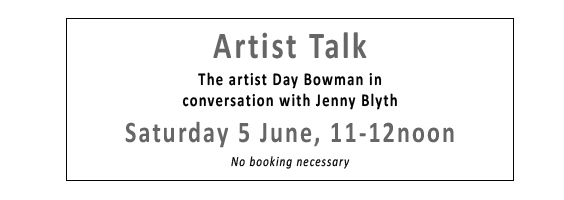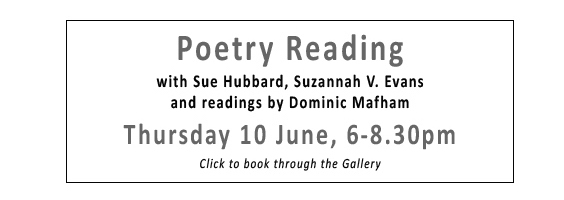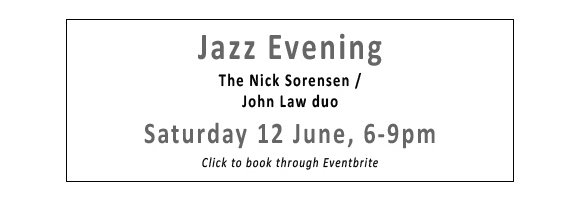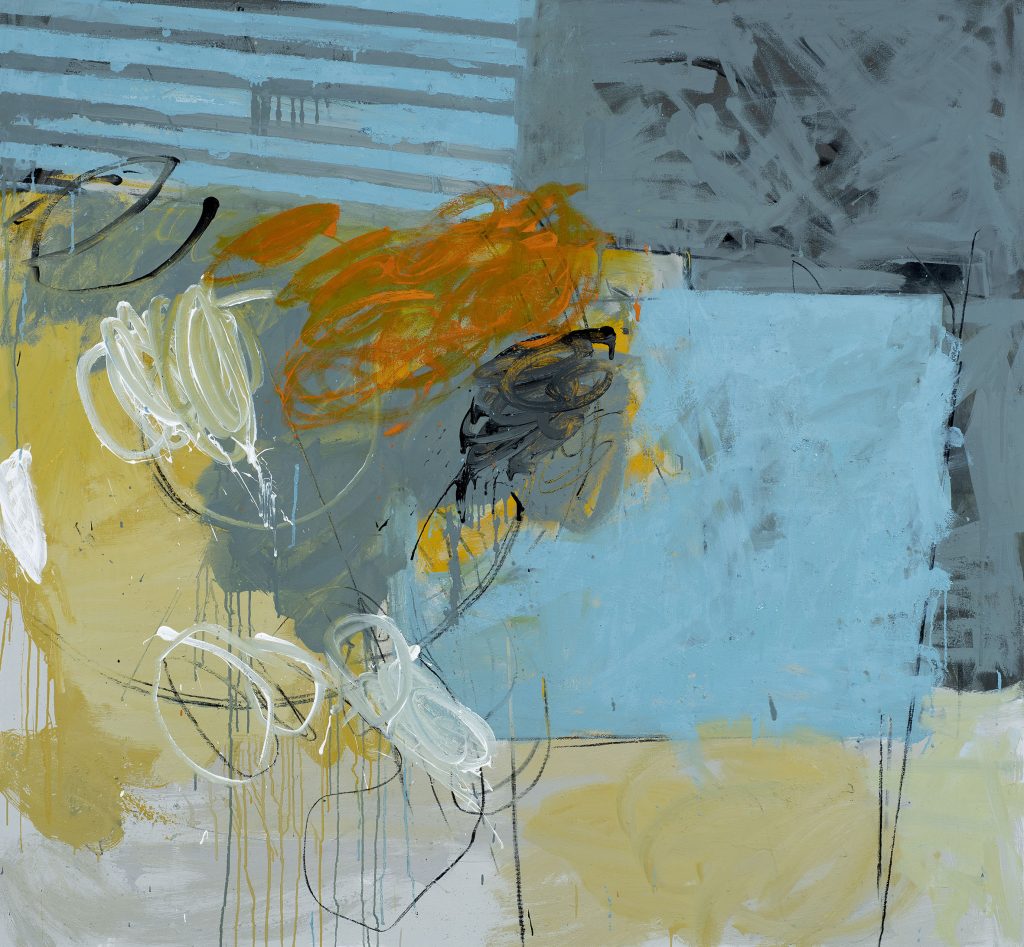1 – 12 June 2021
GALLERY 1
Growing up in a holiday destination, small, seaside town it is not surprising that much of my work has referenced the sea, the beach and the littoral. In this new series of paintings I find that the canvases echo the marks, lines and shapes that we made in the wet, grey sand of my home town beach: thus the canvas becomes the beach that acted as the canvas of my child-hood.
The beach acted as our playground where, wading to the water’s edge, the grey sands stretched for miles. These sands provided a canvas for mark-making, inscribing names, hop-scotch, drawing out goal posts or strange messages to the gods. A concrete paddling pool, a sea wall built high and colourful windbreaks that doubled up as modesty screens all jostled for space and recognition; this was a place where fortifications were swept away by the tide and where gritty tea was drunk from plastic cups. And as the seasons changed I became aware of how a place full of noise and laughter, people and sunshine became one of out-of-season emptiness; the windswept promenades, ripped hoardings and harsh winds had transformed our beach, only the tides and the lugworm castles were a constant.
In this current series I find working quickly, moving one to another, I am allowing a sense of play and random mark-making to tell the story. This enables the process to defer concerns with outcomes and to allow for emergent, experimental image-making. Thus through the use of oil paint, charcoal and conte, scribbles and erasures are a constant and inevitably there is a discrepancy between the originating concept and emergent outcome.
In my current body of work, Seaside Citadels, I have been reflecting on how Britain sees itself as a nation: a nation apart or part of a global community? During last summer I visited a number of south coast seaside towns and was struck by the shapes of fortress constructions from castles to Martello Towers and the abandoned pill boxes of WW2. If they haven’t been saved by English Heritage or converted into smart holiday homes they have fallen into disrepair and ruin. I like the shapes and lines of such buildings and have employed them in these paintings; for me they echo the small sandcastles we patted out on the wet sands during the long summer holidays.
Along with scratched childhood messages to the gods, our childhood castles in the sand were built to keep out the marauding tidal waters; today, I believe, these tidal images represent something more sinister referencing an incoming wave of bigotry and intolerance. And whilst these are not overtly political works I find within them a questioning on the notion of place, identity and belonging.
Day Bowman, March 2021




